
How to Use DCDC Boost Converter: Examples, Pinouts, and Specs
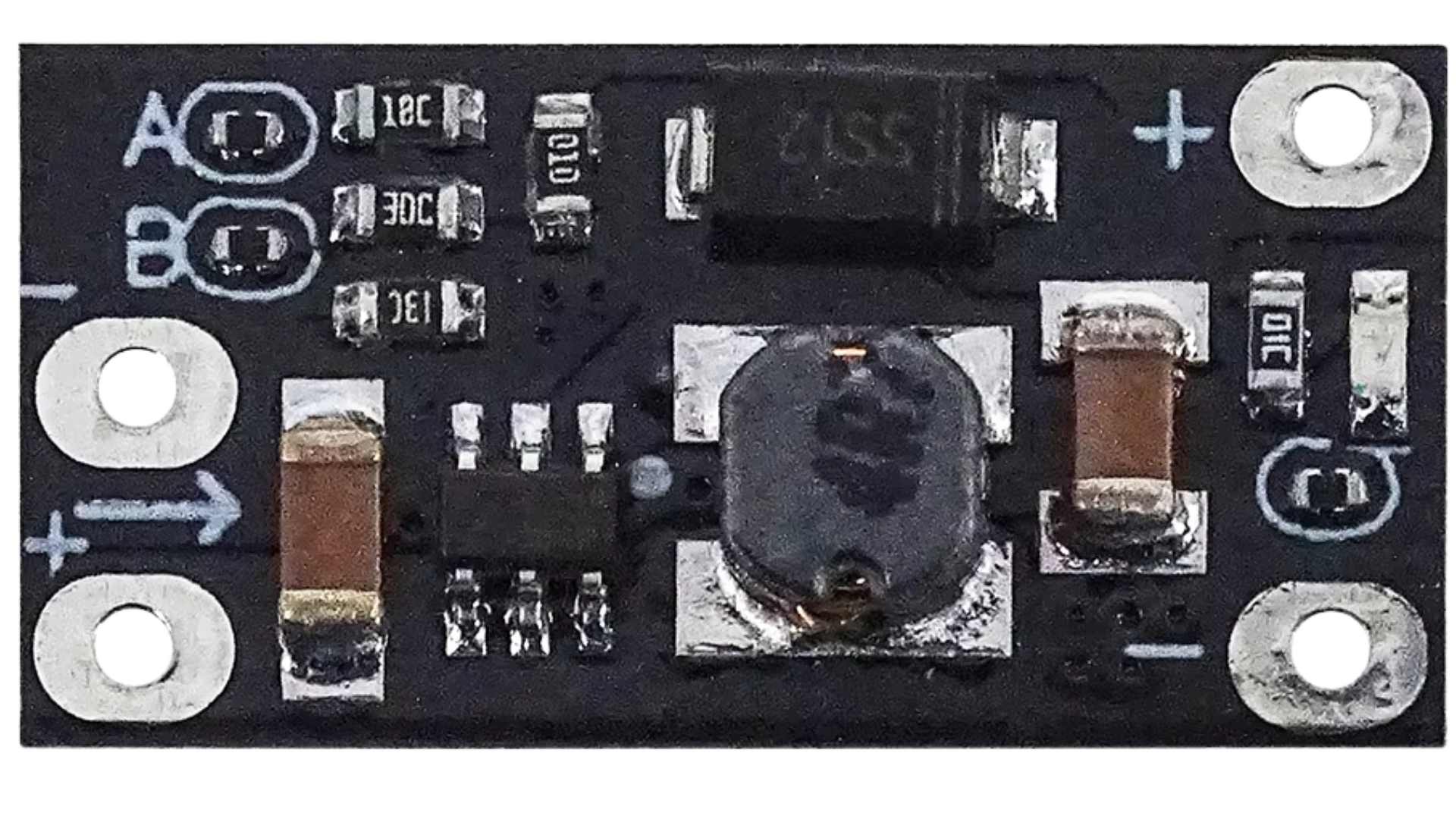
 Design with DCDC Boost Converter in Cirkit Designer
Design with DCDC Boost Converter in Cirkit DesignerIntroduction
A DC-DC boost converter is a power electronic device designed to step up (increase) the input voltage to a higher output voltage while maintaining the same polarity. It achieves this by using inductors, capacitors, and switching elements to efficiently transfer energy. Boost converters are widely used in applications where a higher voltage is required from a lower voltage source, such as:
- Powering high-voltage devices from batteries (e.g., LED drivers, portable electronics)
- Renewable energy systems (e.g., solar panels, fuel cells)
- Automotive applications (e.g., electric vehicles, hybrid systems)
- Industrial and communication systems requiring voltage regulation
Explore Projects Built with DCDC Boost Converter
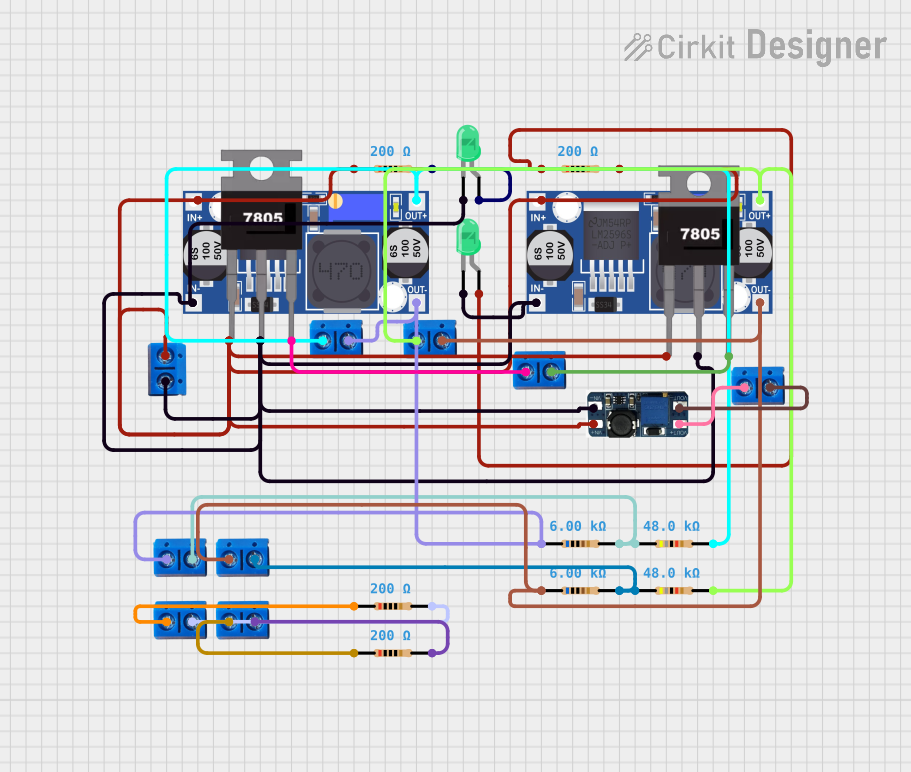
 Open Project in Cirkit Designer
Open Project in Cirkit Designer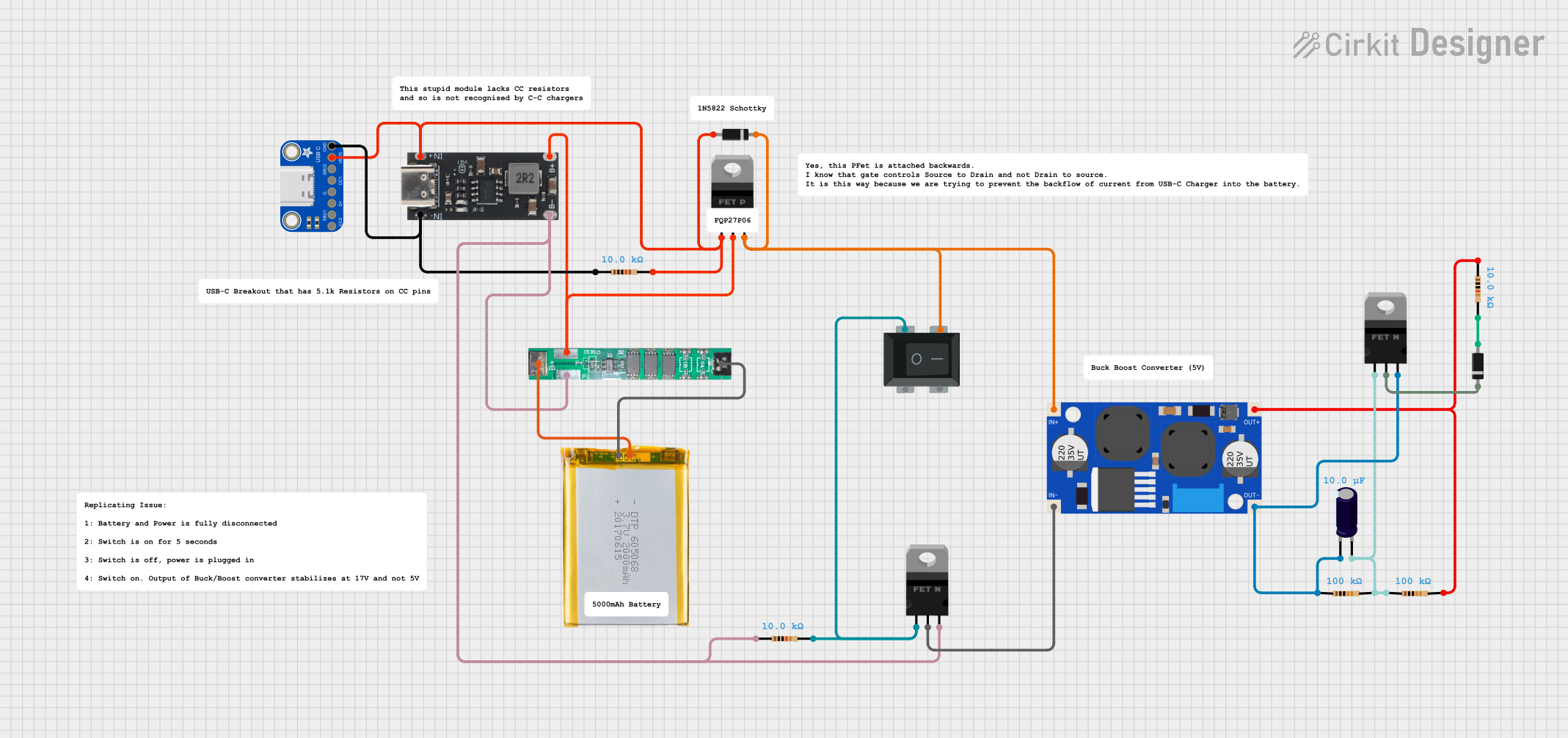
 Open Project in Cirkit Designer
Open Project in Cirkit Designer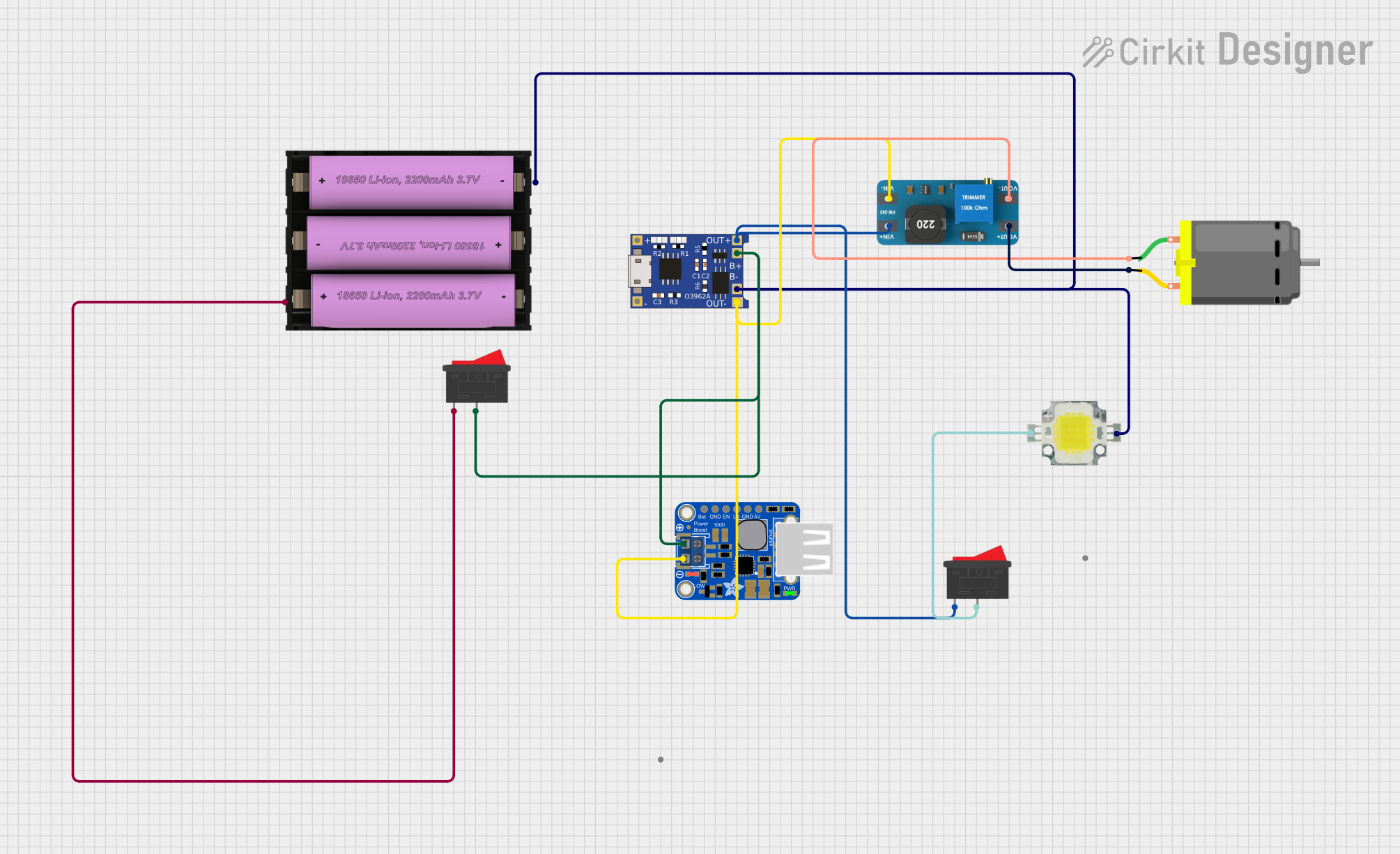
 Open Project in Cirkit Designer
Open Project in Cirkit Designer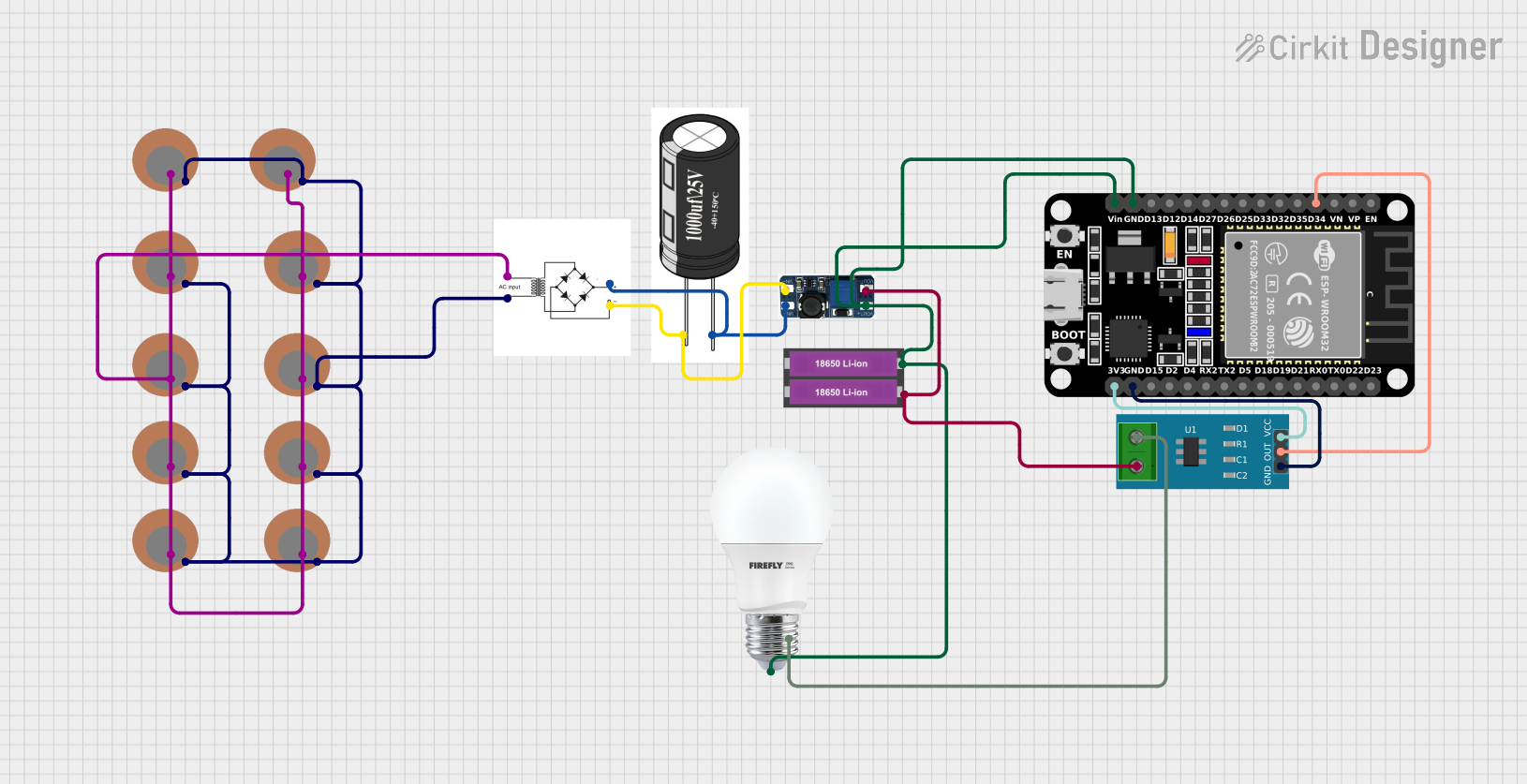
 Open Project in Cirkit Designer
Open Project in Cirkit DesignerExplore Projects Built with DCDC Boost Converter

 Open Project in Cirkit Designer
Open Project in Cirkit Designer
 Open Project in Cirkit Designer
Open Project in Cirkit Designer
 Open Project in Cirkit Designer
Open Project in Cirkit Designer
 Open Project in Cirkit Designer
Open Project in Cirkit DesignerTechnical Specifications
Below are the general technical specifications for a typical DC-DC boost converter. Note that actual values may vary depending on the specific model.
General Specifications
- Input Voltage Range: 3V to 32V
- Output Voltage Range: 5V to 35V (adjustable via potentiometer)
- Maximum Output Current: 2A (continuous), 3A (peak)
- Efficiency: Up to 95% (depending on input/output voltage and load)
- Switching Frequency: 150 kHz
- Operating Temperature: -40°C to +85°C
Pin Configuration and Descriptions
The DC-DC boost converter typically has four pins or terminals. Below is a table describing each pin:
| Pin/Terminal | Label | Description |
|---|---|---|
| 1 | VIN | Positive input voltage terminal. Connect to the lower voltage power source. |
| 2 | GND | Ground terminal. Connect to the negative terminal of the power source. |
| 3 | VOUT | Positive output voltage terminal. Provides the boosted voltage to the load. |
| 4 | ADJ | Adjustment pin. Used to set the output voltage via an onboard potentiometer. |
Usage Instructions
How to Use the DC-DC Boost Converter in a Circuit
Connect the Input Voltage:
- Connect the positive terminal of the power source to the
VINpin. - Connect the negative terminal of the power source to the
GNDpin.
- Connect the positive terminal of the power source to the
Set the Output Voltage:
- Use a small screwdriver to adjust the onboard potentiometer connected to the
ADJpin. - Turn clockwise to increase the output voltage or counterclockwise to decrease it.
- Use a multimeter to measure the output voltage at the
VOUTpin while adjusting.
- Use a small screwdriver to adjust the onboard potentiometer connected to the
Connect the Load:
- Connect the positive terminal of the load to the
VOUTpin. - Connect the negative terminal of the load to the
GNDpin.
- Connect the positive terminal of the load to the
Power On:
- Turn on the power source. The boost converter will step up the input voltage to the desired output voltage.
Important Considerations and Best Practices
- Input Voltage Range: Ensure the input voltage is within the specified range (e.g., 3V to 32V). Exceeding this range may damage the converter.
- Output Voltage Adjustment: Always measure the output voltage with a multimeter when adjusting the potentiometer to avoid overvoltage damage to the load.
- Current Limitations: Do not exceed the maximum output current rating (e.g., 2A continuous). Use a heatsink if the converter gets too hot under load.
- Capacitor Selection: For stable operation, ensure the input and output capacitors are of appropriate value and quality (e.g., low ESR capacitors).
- Polarity: Double-check the polarity of all connections. Reversing the input or output connections can damage the converter.
Example: Using a DC-DC Boost Converter with Arduino UNO
Below is an example of how to use a DC-DC boost converter to power an Arduino UNO from a 3.7V lithium-ion battery:
- Connect the battery's positive terminal to the
VINpin and the negative terminal to theGNDpin of the boost converter. - Adjust the potentiometer to set the output voltage to 5V (required by the Arduino UNO).
- Connect the
VOUTpin of the boost converter to the Arduino's5Vpin. - Connect the
GNDpin of the boost converter to the Arduino'sGNDpin.
Here is a simple Arduino sketch to blink an LED, powered by the boost converter:
// Simple LED blink example for Arduino UNO
// Ensure the boost converter is set to output 5V before connecting to the Arduino.
const int ledPin = 13; // Built-in LED pin on Arduino UNO
void setup() {
pinMode(ledPin, OUTPUT); // Set the LED pin as an output
}
void loop() {
digitalWrite(ledPin, HIGH); // Turn the LED on
delay(1000); // Wait for 1 second
digitalWrite(ledPin, LOW); // Turn the LED off
delay(1000); // Wait for 1 second
}
Troubleshooting and FAQs
Common Issues and Solutions
No Output Voltage:
- Cause: Incorrect wiring or insufficient input voltage.
- Solution: Verify all connections and ensure the input voltage is within the specified range.
Output Voltage Fluctuates:
- Cause: Insufficient input power or unstable load.
- Solution: Use a stable power source and ensure the load does not exceed the converter's current rating.
Converter Overheats:
- Cause: Excessive load current or poor ventilation.
- Solution: Reduce the load current or add a heatsink to the converter.
Cannot Adjust Output Voltage:
- Cause: Faulty potentiometer or incorrect adjustment procedure.
- Solution: Replace the potentiometer or ensure proper adjustment with a multimeter.
FAQs
Q: Can I use the boost converter to power a 12V device from a 5V USB source?
- A: Yes, as long as the device's current requirement does not exceed the boost converter's maximum output current.
Q: What happens if I reverse the input polarity?
- A: Most boost converters do not have reverse polarity protection, so reversing the input polarity may permanently damage the device.
Q: Can I use the boost converter with a solar panel?
- A: Yes, but ensure the solar panel's output voltage and current are within the converter's input range and power limits.
Q: How do I calculate the efficiency of the boost converter?
- A: Efficiency (%) = (Output Power / Input Power) × 100. Measure the input and output voltage and current to calculate power.
By following this documentation, you can effectively use a DC-DC boost converter in your projects while avoiding common pitfalls.